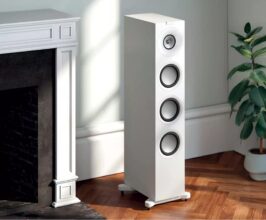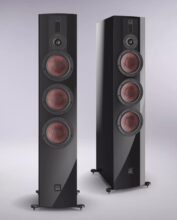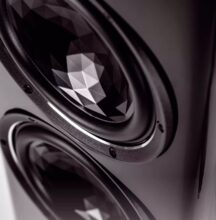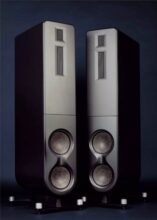Piega Ace 50 Review – Ace in the pole
Switzerland’s Piega does high style in its sleep, but David Vivian wonders if its latest entry-level tower can also hit the heights. Read our Piega Ace 50 Review.
As you might imagine, hi-fi reviewers get to unbox a lot of floorstanding speakers. Some deem the process exciting enough to warrant a video on Youtube. Personally, it’s something I put off until I absolutely have to as it involves a sharp knife, industrial grade staples, fly-away bobbles of polystyrene and, should the loudspeaker be a big ’un, the awakening of muscle groups that I never knew I had.
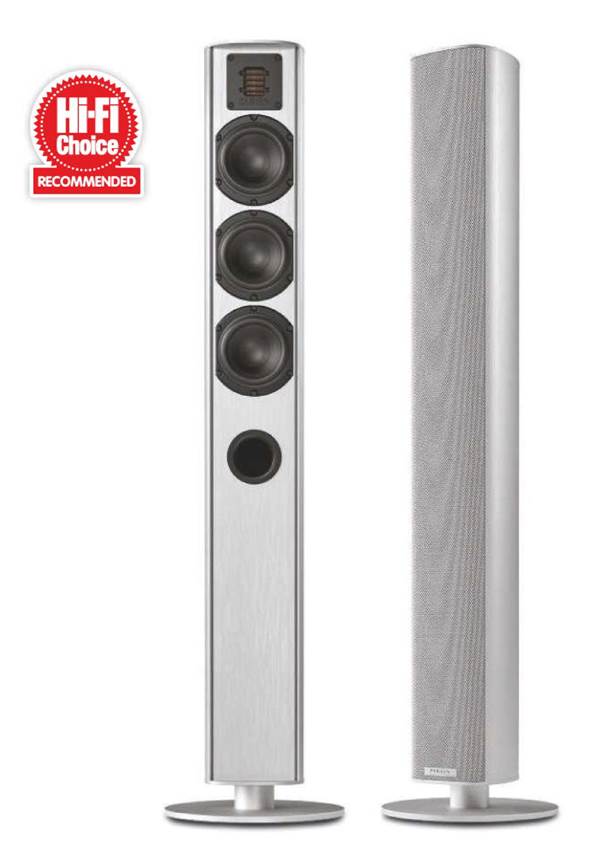
There have, or course, been a couple of exceptions. A few years ago, unpacking the Piega TMicro 60 (HFC 427) – the speaker the Ace 50 now supersedes – was strangely satisfying. Fairly tall speaker, this, but its slim, columnar form factor and modest, evenly distributed weight made it easy to cradle from its carton, the cool tactility of aluminium curves a relief from the palm-bruising angularity of boxy, sharp-edged MDF rivals.
And it’s the same here. The flagship floorstander of Piega’s new entry-level aluminium range (there’s also a baby standmount and a centre speaker), the Ace 50 is another gleaming svelte beauty from designer Stephan Hurlemann, which looks so good that once gently prised from the cardboard, almost deserves a fanfare – a moment’s reverie to drink in the sleek aesthetic at the very least.
All right, unlike the TMicro 60 which had a thin, footprint-enhancing plinth at the base of the enclosure, the Ace 50’s stabilising plate has to be screwed on to a central pillar that lifts the speaker up about 30mm from the floor. But, as I’ve discovered before, so meticulously machined are DIY parts from Piega’s Swiss factory, aligning shiny, dinky screws with precision-cut threads isn’t just a breeze but mildly therapeutic.
In essence, this is a tweaked (all right, evolved) TMicro 60 for £ less, making it the most affordable
Piega floorstander you can buy that uses an aluminium enclosure. The cabinet is just over a metre tall and comes with a promise from Piega’s engineers that it will sound every bit as good as it looks. Some prospect. The exceptional rigidity of the braced aluminium enclosure clearly plays its part here. But driver tech is key.
Piega is Italian for ‘fold’ and a folded diaphragm is the principle behind the company’s well-established AMT-1 (Air Motion Transformer) tweeter, which marries a large surface area ribbon with a powerful neodymium magnet motor assembly. A smooth, sweet, extended top end is the goal and, judging by past encounters, an easy score.
The Ace 50 uses three of the revised long-throw 120mm mid/bass MDS
Like its look, the Ace 50’s sound is lithe, elegant, clean, refined and precise
drivers that’s common to all the speakers in the range. Configured with a three-way crossover, the two bottom-most of the drivers handle the lower frequencies with the one closest to the tweeter assigned the midrange. The upshot is said to trump the power handling of the outgoing TMicro 60 while also digging down deeper in the bass region.
Piega has spent a few years now establishing a niche for itself in the UK, its aim latterly being to prove that a cool lifestyle aesthetic is by no means incompatible with the kind of sound quality that will raise an audiophile’s eyebrow at the very least. And full marks for persistence because the company has been on message from the start.
The Zurich-based loundspeaker manufacturer was founded back in
| PRODUCT | Piega Ace 50 |
| ORIGIN | Switzerland |
| TYPE | Three-way floorstanding loudspeaker |
| WEIGHT | 12kg |
| DIMENSIONS (WxHxD) | 140×1,040x160mm |
| FEATURES | AMT-1 Air Motion Transformer tweeter 120mm MDS midrange driver 2x 120mm MDS bass drivers Quoted sensitivity: 90dB/1W/1m (4ohm) |
| DISTRIBUTOR | Piega Loudspeakers (UK) Ltd. |
| TELEPHONE | 01 44 7259042 |
| WEBSITE | WEBSITE piega.co.uk |
1986 and immediately invested in ribbon tweeter technology. Its Linear Drive Ribbon (LDR) coaxial tweeter was claimed to be the first ribbon unit that could reach low enough to handle some midrange duties. Piega also went on to produce the first commercially available aluminium-housed hi-fi loudspeaker back in 1989 and seamless alloy enclosures continued to be used in its most expensive designs alongside the more affordable TMicro and now Ace lineups.
The statuesque height might suggest free space siting, but the Ace 50 has a single front-firing port so it can be placed much closer to walls without unduly augmenting and bloating the lower frequencies. Nor has that slender alloy enclosure been adopted principally because it looks pretty.
It’s more accurately a case of function informing form, argues Piega, in that its stiffness ensures: “absolute consistency in resisting
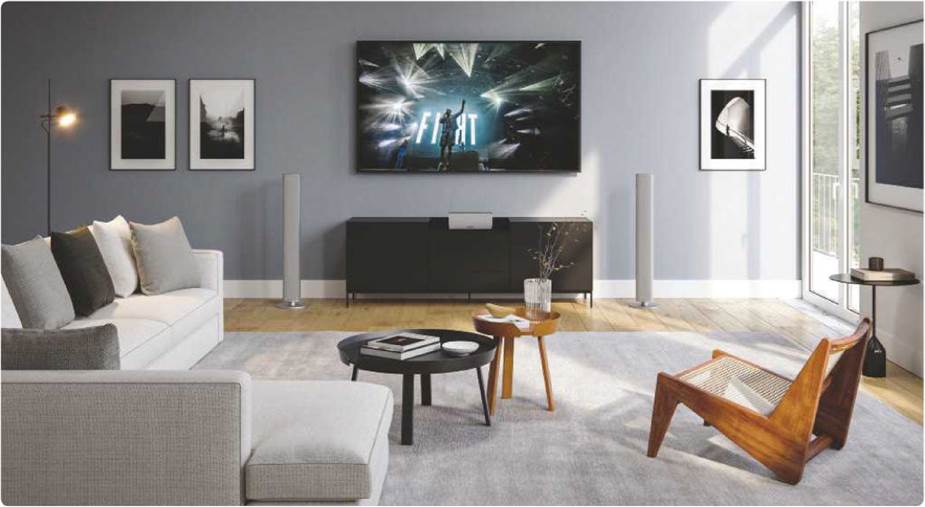
resonance while ensuring fine frequency linearity.” Even with a price tag just a smidge short of the £ mark, build and finish far exceed expectations and if natural aluminium with a grey fabric grille as presented here isn’t your thing, the Ace 50 is also available in anodised black with black fabric grille or high gloss white with white fabric grille.
In a sense, the Ace 50 does fulfil the promise of sounding as good as it looks. Or rather, the visual and sonic descriptors that apply are virtually interchangeable. Like a snapshot of the look, the sound can be summarised as being lithe, elegant, clean and precise. Oodles of couth, control and refinement, no rough edges.
I suppose it’s no great surprise. With its ribbon-style ATM tweeter, narrow baffles and super-stiff metal enclosures, the delicate, intricate and spatial stuff was never going to be a big ask. The Ace 50 delivers a much more confident low-frequency performance than its predecessor.
It isn’t the weightiest bass you’ll find in a circa floorstander, but it is smoothly extended, agile and tuneful with a impressive sense of articulation and texture. Teamed with the effortlessly insightful and tonally natural Electrocompaniet EC80D integrated amp (HFC 473), Audiolab 6000 CDT CD transport (HFC 447) and Chord Electronics Hugo TT2 DAC (HFC 468), the Ezra Collective playing Wayne Shorter’s Footprints from the Blue Note label’s brilliant Blue Note Re:imagined album has almost spookily solid imaging and entirely believable soundstage ambience, the brass section rendered with impressive precision and clarity and well-defined timbral contrasts.
The Ace 50’s skillset serves Steely Dan stalwart Donald Fagen’s I’m Not The Same Without You from his solo Sunken Condos album just as adroitly
You’ll not find anything costing the same as the Ace 50 that looks as good
with fine vocal intelligibility and a satisfyingly separated and layered presentation of the typically immaculate, lush and extremely densely packed production.
Simpler, slower fare from late jazz guitar virtuoso Larry Coryell’s final studio recording, Last Swing With Ireland, is simply lovely. The set opens with In A Sentimental Mood. The spare phrasing of Coryell’s acoustic guitar cushioned by Dave Redmon’s loping bass and the sauntering brush swirls of Kevin Brady on drums, perhaps shows the Ace 50 at its best with easily enough detail, warmth and micro-dynamic subtlety to seduce any lucky listener. Much sprightlier, The Last Peavey from the same album showcases drummer Brady’s up-tempo chops and, here again, the Piega’s speed and rhythmic accuracy are right on the money.
You’re unlikely to find anything in the bracket that looks half as good as the Ace 50. When it comes to sound quality, Bowers & Wilkins 603 S2 Anniversary Edition sounds bigger and bolder and combines this with excellent detail resolution. Another to consider is Scansonic’s similarly lissom M20, which also employs a ribbon tweeter and possesses a presentation that rivals the Piega’s for finesse, openness and superb timing.
As you’ve probably already deduced this isn’t a speaker for viscerally engaged volume levels, trouser flapping bass or the kind of percussive slam that can rearrange your hairdo and blow out your windows. A harmonious melding of style and sound is much more like an apt description of its performance. What it does well though, it does very well indeed. It’s pretty self-evident that a speaker that is clear, open, tonally natural and extremely light on its feet will do no harm at all to most types of music and, on the whole, given the additional assets of solid imaging and very tidy timing, it can actually be said to do a great deal of good



